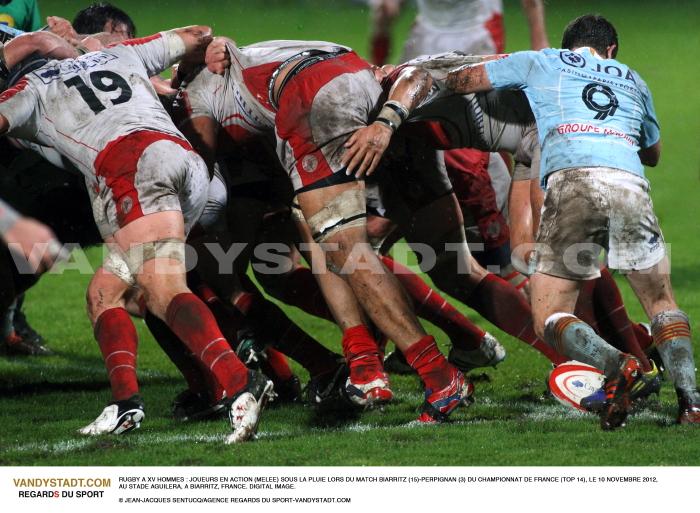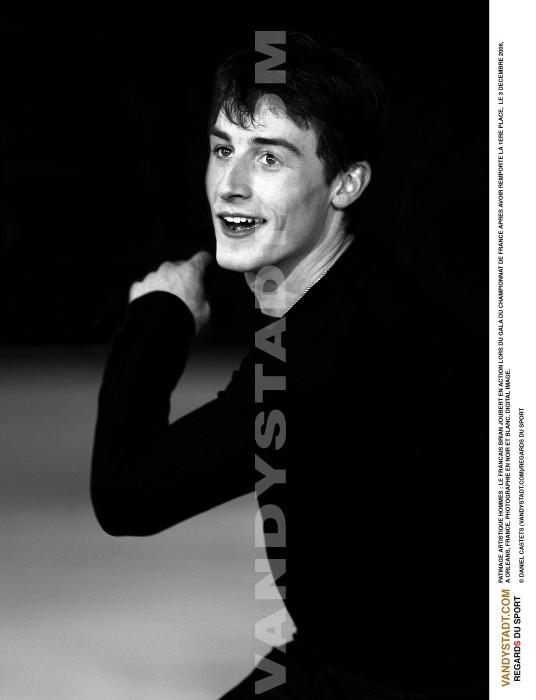Hockey sur glace - Ice hockey history
Ice Hockey - Olympic Sports
![]()
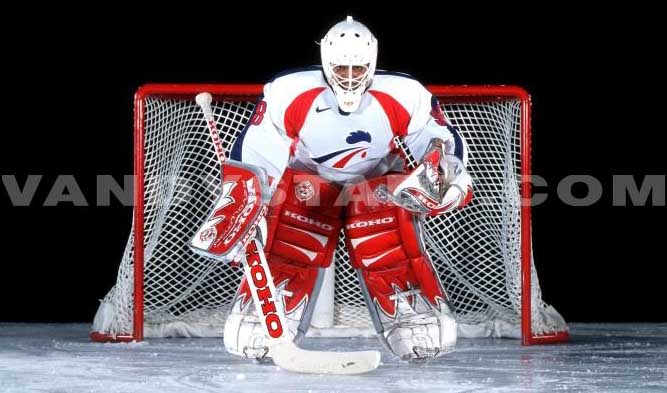
The origin of the word "hockey" is difficult to specify. According to some, it comes from the word "hook" (hook) and by others "Hoock day" (day of celebration in Scandinavia). It can also come from the Old French "hocquet 'which means" butt ".
History
Ice hockey is a Canadian game, whose origins date back to the early nineteenth century. It is based on plusieURSS similar sports practiced in Europe, like Scandinavia bandy it also presents similarities with the hurley and shinny. It makes the most often parallels between the "bandy" and hockey. The "Bandy" is an ancient team sport where joueeurs struck the ball with a stick. The forerunner of lacrosse, "baggataway", invented by the "Chippewa" Indians on Lake Ontario, is played on ice without skates, using a rounded butt. They are British soldiers stationed in Nova Scotia, Canada, who introduced the sport in North America by playing games.
The first hockey league
Ice was founded in 1855 in Kingston (Ontario). The puck or 'puck' has replaced the ball in the 1860's. In 1879, two students from McGill University in Montreal, WF Robertson and RF Smith, have written the first set of rules known hockey. Subsequently, they founded the Hockey Club of McGill University in 1880.
Canada's hockey went to the USA where the United States Amateur Hockey League was founded in 1896. The first hockey game took place between NIVERSITY Yale and John Hopkins in 1895.
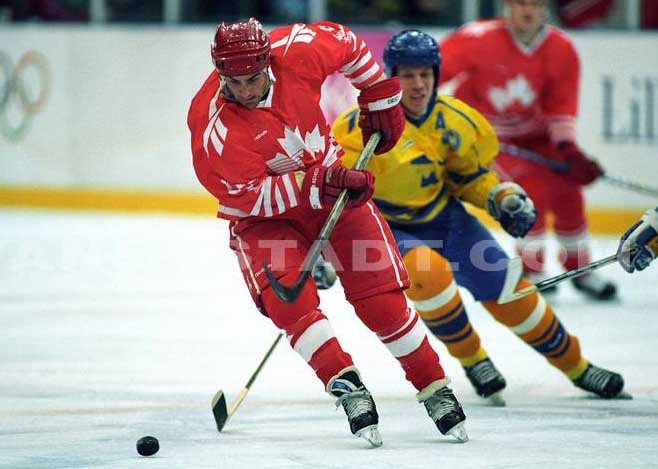
The Ice hockey in France
Sport England won and came to France. In 1891, players recruited by Pierre de Coubertin played Canal Versailles. The first French club was the Hockey Club of Paris, founded in 1901.
In 1905, the Club of Paris skaters bat "Princess Ice Hockey Club London" which was world champion for seven years. The 15 and May 16, 1908, the skater Louis Magnus has created the International League Ice Hockey.
The Federation ice hockey became part of the French Federation of Ice Sports November 4, 1942. The French Federation of Ice Hockey was established in April 2006 with the first President Luc Tardif f.
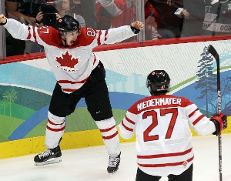
The International Federation
was founded by the French Louis Magnus (1881-1950), five times champion of France's figure skating in Paris in 1908. He was president from 1908 to 1912. 63 nations are currently affiliated to the Federation Internationale. It celebrated its 100th anniversary in 2008. On this occasion, 56 experts from 16 nations have elected the best player in the history of ice hockey. Here are six players in the All-Star team:
- Goaltender: Vladislav Tretiak RUS (30 votes)
- Defender: RUS Vyacheslav Fetisov (54 votes)
- 2nd Defender: Börje Salming SWE (17 votes)
- Winger: Valeri Kharlamov RUS (21 votes)
- 2nd Winger: Sergei Makarov RUS (18 votes)
- Center: Wayne Gretzky C (38 votes)
The ice hockey and Olympism
Ice hockey became an Olympic sport in 1920 at the Summer Games in Antwerp for men and 1998 women.
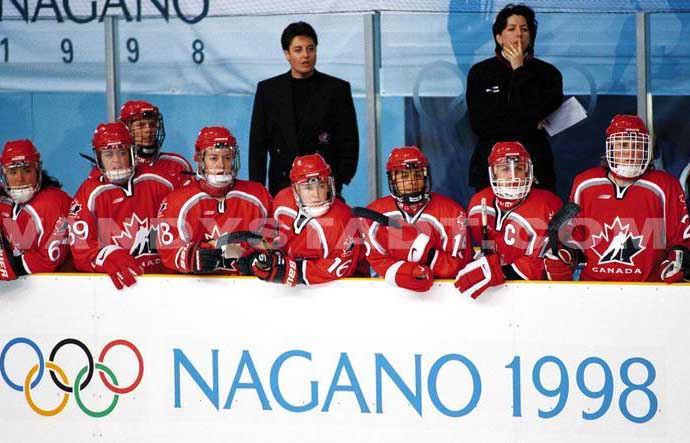
Good to know
:
- The first European Championships were held in 1910 in Les Avants, Switzerland and won by Great Britain.
- The first world championships with teams of seven players, was organized in 1920 as part of the Olympic Games.
The Women's Hockey
was developed in Canada in the 20s. The first Canadian national tournament was created in 1982 followed by the World Invitational Tournament in 1987. The first European Championship was held in 1989, the first world championships were held in 1990.
There are approximately
- 485 000 licensees for 2500 rinks in the USA
- 574 125 for 2500 rinks in Canada
- 52 500 for 216 rinks in Finland
- 72 000 to 90 rinks in the Czech Republic
- 25 900 for 153 rinks in Germany
- 65 600 for 292 rinks in Sweden
- 77 700 42 rinks in Russia
- 25 645 to 57 rinks in Japan
- 26 990 for 88 arenas in Switzerland
- 17 745 for 128 rinks in France
- 4255 for 14 rinks in Denmark
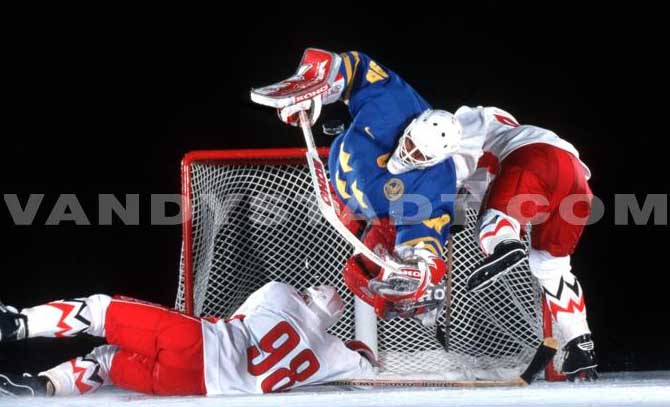
Competition
Two teams of six players (one center, two forwards, two backs and a goalkeeper) compete on an ice rink, trying to score as many goals against the opposing team with a stick.
There may be players on the track are less likely because penalties imposed.
Up to 20 players and 2 goalies are allowed for men against 18 players and 2 keepers in women.
Do you know a goalkeeper may be replaced by a skater in the event of delayed penalty or at any other time of the match it at the risk of the team.
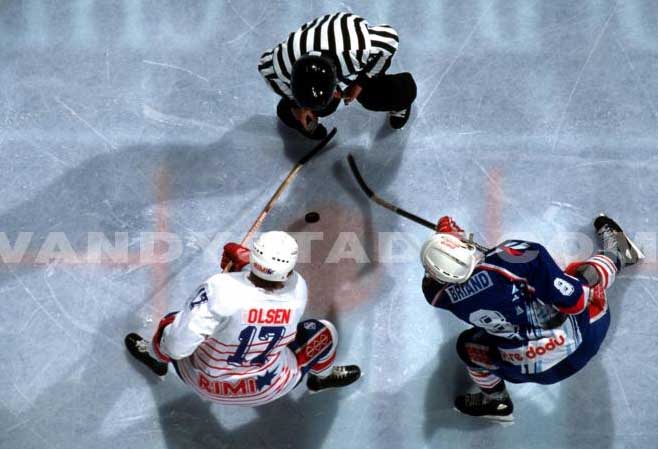
Duration
A match consists of three periods of 20 minutes with a break of 15 minutes after the first and second periods. The teams change ends for each period. In international competitions, in case of a tie at the end of three periods, an extension of 10 minutes is granted. If at the end of the extension, no goal was scored, the winner is the team that scores first.
Ice hockey is by far the team sport Fastest hockey players can move at 60 km / h. the puck can travel at speeds exceeding 150 mph!
The rink
The rink oval measuring 56 to 60 m in length from 26 to 30 m wide. The corners of the rink are rounded with a radius of curvature of 7 to 8.5 m. It must be surrounded by a wall of wood or material called "band" high of 1.20 m from the surface of the ice.

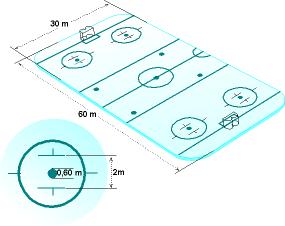
Clocks and signals
Each rink shall have an electric clock for the spectators, players and officials to be informed on the exact time of all phases of the game. The clock will show the game time elapsed during each period and possibly the penalty time remaining to be punished for players.
Butts
The crosses are made of wood or other material such as aluminum or plastic. Tape not fluorescent color can be placed anywhere around the stock, which the curve should not exceed 1.5 cm
The butts will not exceed a length of 152 cm measured from the heel to the tip of the handle, and 32 cm from the heel to the tip of the blade. The butt of the guard is wider and heavier.
Skids
In general, skates ice hockey have a blade the size of the shoe, in terms of length and width of 3 mm on average (5 mm for the goalie). To facilitate the change of direction, the ends are rounded. The shoe is reinforced to improve the holding of the foot.
Equipment goalie
It includes a stick, pads, plates, roller catches a glove, a helmet with full mask and leggings.
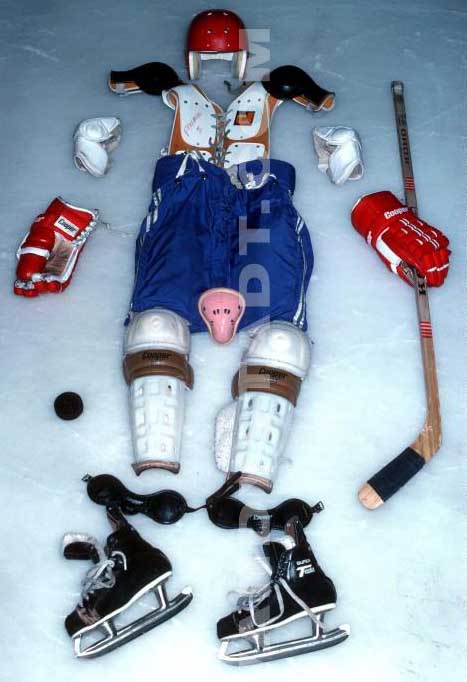
Protective Equipment
All protective equipment except gloves, helmets and leggings guardian must be brought completely under the clothing of the player.

All players except the goalkeeper, must wear a helmet.
All guards must wear a helmet with face protection, or visor and neck protector.
All players must wear a full mask.
The first protective helmets dating from 1952. They appear in the NHL in 1980 and became mandatory in 1984.
The goalkeeper is still the mascot of his team but also the basic human, even providential man. Thus, the time of the splendor of the Soviet team, Vladislav Tretiak , CSKA Moscow, triple Olympic champion, has emerged as the greatest goalie of all time.
The puck
![]()
The puck (or puck in Canada) is a disk of vulcanized rubber or other approved material. It measures 2.54 cm thick and 7.62 cm in diameter. For the most part, it must be black. The puck must not weigh less than 156 g or more than 170 g.
The main rules
Change Player
Substitutions are allowed at any time from the bench, provided that the player or players withdrawing the game had reached the bench.
If the player leaving the ice touches the puck while his replacement is already on ice, there are two minute penalty for redundancy.
Penalties
The players were expelled for two, five or ten minutes depending on the seriousness of the misconduct or for the rest of the game for misconduct.
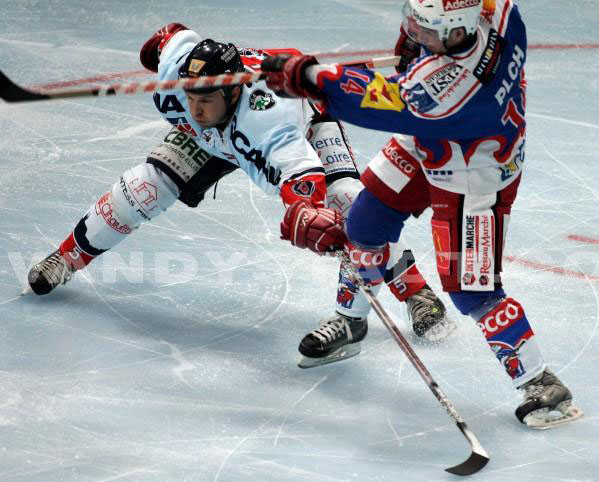
Some faults
? Load with the butt or push the opponent back.
? Holding the opponent.
? Hooking the opponent.
? Tripping an opponent.
? Blocking an opponent without the puck has (interference).
? Charging an opponent with his elbow.
? Hitting an opponent with the butt.
Five against four
When, five against four, the referee will whistle simultaneous 2 penalties, 2 players go to "jail", but both teams continue to play five against four.
Change Player
The changes "flying" during the match, can be done only in an imaginary rectangle formed by the length of the bench and placed an imaginary line three feet from the railing.
Crosses broken
A player can not play lacrosse. It can change at any time lacrosse.
T
Omber on the puckA Minor penalty shall be imposed on any player except the goalkeeper who deliberately falls on the puck or who holds or pulls the puck against his body (the guardian has no right to lie on the puck behind the goal line).
How to score the goal
A goal is valid when the puck completely crosses the goal line after having been deliberately launched with the butt or unintentionally deflected by any player.
A goal is not valid if it is diverted directly from an official in the goal.
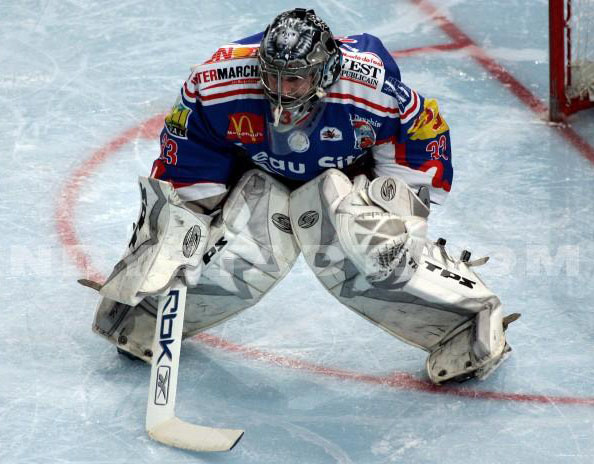
Handle the puck with hands
If a player except the goalkeeper, closes his hand on the puck, play is stopped and a Minor penalty imposed on it. Any player has the right to stop the puck in the air with the open hand to strike him from his defensive zone, unless the player is interested in the opinion of the referee, deliberately wanted to make a pass at a teammate. In this case, the game must be interrupted and the commitment is made to the place where the offense was committed.
Icing
The rink is
Iseo into two halves by the midline to the application of this rule. When both teams have the same number of players on the ice when a player unedit team launches the puck from his own half of ice beyond the goal line of the opposing team, whether drawing or deflect the puck, play shall be stopped and the puck must be committed to one of the points of engagement end of the camp of the offending team, except if the puck enters the goal of the opposing team, which then causes a worthy goal. The determination of whether or not prohibited release is based on the point of last contact of the puck by the team in possession of it.
Obstruction
A minor penalty is imposed on the player who interferes or impedes the advance of an opponent not in possession of the puck, which is deliberately dropped the butt of the hands of an opponent, or prevents an opponent with left dropped his butt to pick it up.
When a player is standing in his crease, the referee may decide on a commitment in the neutral zone.
Kick the puck
It is permissible to give a kick to the puck in all zones, but no goal can be scored directly from a kick by a player to attack, unless the puck and launched by a player is accidentally deflected and no movement in the goal by any player.
Offside (offside)
The position of the player's skates and not the stick is the determining factor in deciding whether offside. A player is offside when both skates are completely past the outer edge of the defensive zone or the opposing blue line.
The players of the offensive team must not precede the puck into the attacking zone.
When the referee raises his arm to signal a delayed offside (he did not whistle), if all the players who crossed the blue line back in the neutral zone, the game will be canceled out.
The offside password removed
: To speed up play, the new regulation allows the holder of the puck to pass directly from its defensive zone to a partner already located beyond the midline.
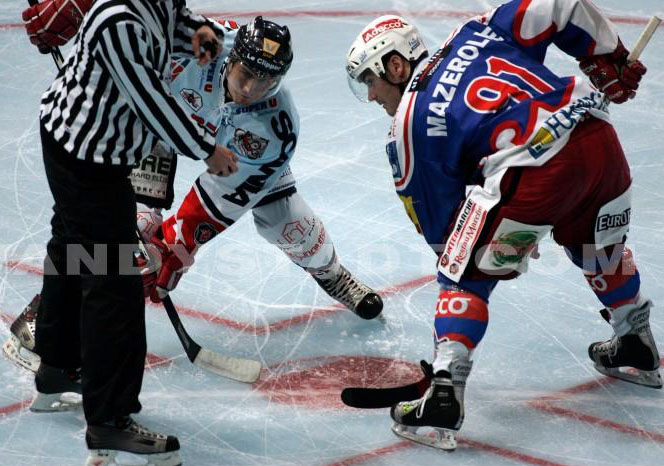
Glossary
A. This letter is written on the jersey of 2 players per team. They are the assistants of the master.
Butterfly Stop: A stop made by the goalkeeper throwing himself on his knees, feet apart, forming a "V" with its protections. Such action is effective because it can cover a significant portion of the territory.
Spectators: Point awarded to a player for having made a decisive pass, usually the last two players who have passed the puck to the goal scorer.
Digital Advantage: A situation in which a team has more players on the track because the opposing team has been one or more penalties.
Bodychecks. Charges with the body. It also uses "thwarted".
C. The letter, written on the jersey of a player, means the team captain.
Driving Change: New players constantly playing
Load. A basic technique based on the defense. The enemy tries to fall or strike the attacker loses control of the puck.
Load error: A violation in which a player deliberately charge another player after more than two strides or not.
Coach. Coach of the team. He decided during the meeting of the tactics to employ.
Escape: A phase of the game in which the wearer moves of the game only to guard the opposing team and can score a goal against one.
Icing. When a player, operating in his own half ice, makes a shot before the center red line and the puck crosses the opposing goal line after crossing the ice.
Failed before: Put pressure on the opposing party when it controls the puck in the neutral zone or in its zone defense.
Between the legs: The space between the legs of goalkeeper. Many goals are scored between the legs because of how the goalie should move to cover the whole cage.
Offside. When a player crosses the blue line to the attacking zone before the puck controlled by his team (the puck must always enter the first zone of attack and the second player).
Shorthanded. When a team has received a penalty, then it plays with 2 or less players on the ice (4 players against 5, 3 players against 5).
Wrist shot: A shot more finesse. Players draw by doing a quick wrist shot when the puck is placed directly against the blade of the stick.
Slap Shot: The fastest shots in hockey. Players make a powerful backhand shot to hit the puck.
Checking: The use of hip or shoulder to prevent a player from advancing or falling on a player.
Checking the puck: A defender or goalkeeper uses the blade of the stick to clear the puck from the stick of an opponent.
Interference: A penalty in which a player impedes another player who does not have the puck.
One-timer: A shot made immediately after receiving a pass. This type of shooting is extremely effective because it can surprise the opposing goalkeeper.
Power Play. Power play with 5 field players placed in the offensive zone against an opponent outnumbered. It is a decisive phase that can lead to a goal (on average once in five).
Puck. Washer rubber vulcanized black. It is also called "puck."
Throw-in: The puck is placed between two opposing players who stand face to face. It is called into play at the start of each period and after any stoppage of play
Shut-outs or laundry. The goalkeeper has conceded a goal during the match.
Slapshot. Spectacular shot. This is a shot in force. The player raises his stick up before coming to knock the puck on the ice.
Numerical superiority. When a team plays with one or two players more than the opposing team.
Territory: A semi-circle in front of goal, and also called the privileged zone of the goalkeeper. No player is allowed to enter the territory of the goalkeeper. Goals are generally denied if a member of the opposing team is in the territory.
Hat trick: Said when a player scores three goals during the same match.
Neutral Zone: One of the three areas of the ice. The neutral zone is located between the two blue lines.
Equipment
Equipment of Skaters
The helmet includes a helmet with a tether strap under the chin, and the option of a face protector or visor.
The hockey gloves: protect the hands of the player's gloves are very thin on the palm and fingers, but are heavily padded on the top of the hand. The glove is also reinforced in the thumb to prevent bending backwards.
The hockey stick: made of wood or composite materials.
The mouth guard: protects the teeth against flying pucks and physical contact as possible.
The sweater with the logo and name of team player are usually affixed to the front of the jersey, and player name and number are listed on the back. The sweater is worn over the protective gear, including shoulder and elbow.
Leggings: include a hard shell on the front to protect against the washers, but generally provide little protection to the calf.
The shoulder: prevent injury to the upper trunk caused by physical contact.
The shoes: are curved heel and have no jagged peaks, to protect other players on the ice.
The equipment of the goalkeeper
The stick has a blade wider than the sticks of players and a wider neck and flat. The goalie stick is used primarily to stop the puck, but the goalkeeper can also handle the puck with the stick.
The shoes: a thicker blade and a boot at least reinforced ankle pads that players, allowing the keeper to slide his feet on the sides to make decisions more easily.
The mask customized to the shape of the face guard and can suffer multiple strokes, high speed from pucks and skate blades. Most leagues, including NHL, now require that goalkeepers wear a throat protector and a neck protector to protect against pucks and skate blades.
The glove of catcher: worn in the other hand, used to stop the puck on the ice to catch a flying puck.
Leggings: leggings heavily padded cover the top of the pad, tibia and knee. The leggings have a width of 11 or 12 inches and are custom designed depending on the size of goalie's legs.
Copyright Sportquick/Promedi








